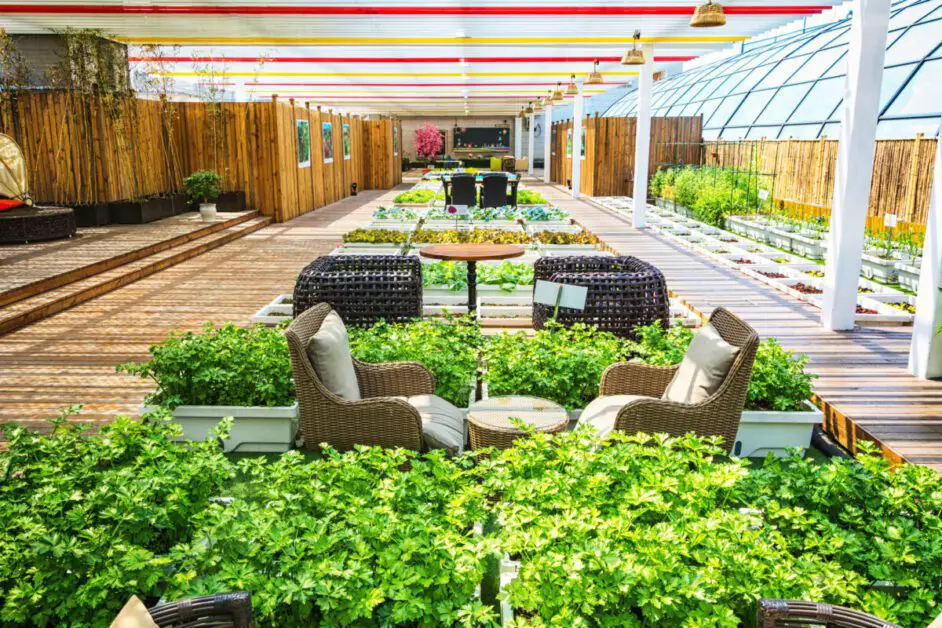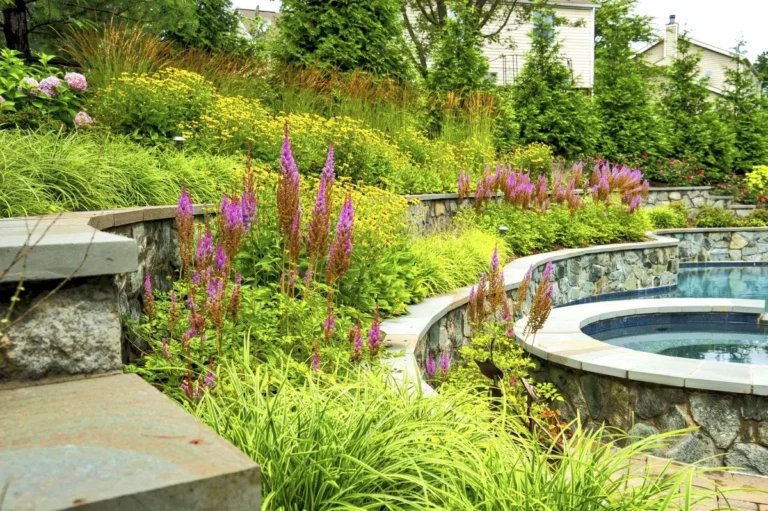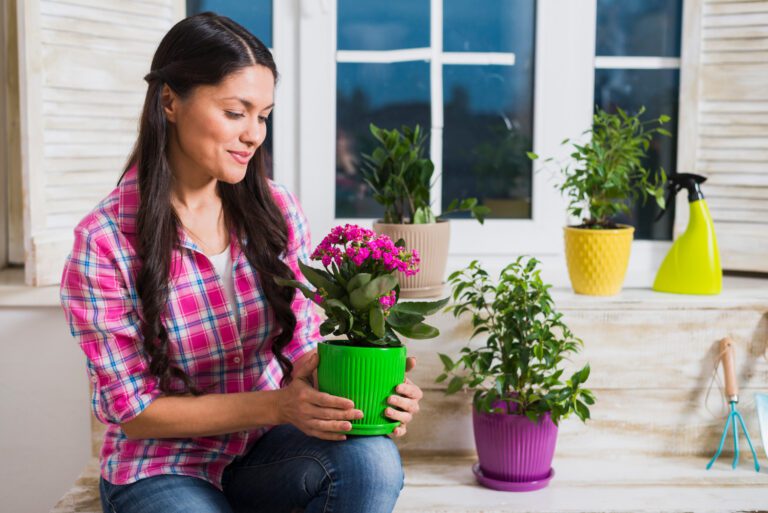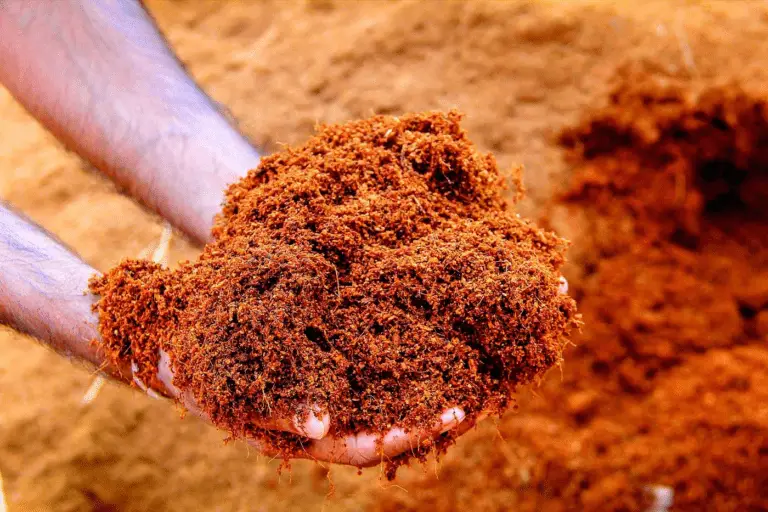How to Build a Raised Garden Bed in 45 Easy and Free Ways
Table of Contents
Understanding the Benefits of Raised Garden Beds
Raised garden beds offer a multitude of benefits for gardening enthusiasts. One of the key advantages is improved soil quality and drainage. By elevating the planting area, raised beds allow excess water to drain more effectively, preventing soil waterlogging and reducing the risk of root rot. Additionally, the soil in raised beds tends to warm up faster in the spring, enabling earlier planting and extending the growing season.

Another benefit of raised garden beds is the enhanced control over soil composition. Gardeners have the ability to customize the soil mixture, providing plants with an ideal balance of nutrients for optimal growth. This flexibility is particularly advantageous in areas with poor soil quality or high clay content. Moreover, raised beds facilitate weed management by creating a defined space where it is easier to spot and remove unwanted plants, reducing competition for resources. Ultimately, these benefits contribute to healthier plants and higher yields, making raised garden beds an excellent choice for gardening enthusiasts.
Analyzing Your Garden Space and Choosing the Right Location
When it comes to creating a successful raised garden bed, one of the most crucial steps is analyzing your garden space and selecting the right location. Before diving into the details of building your garden bed, it is important to consider several factors that will contribute to the overall success of your plants.
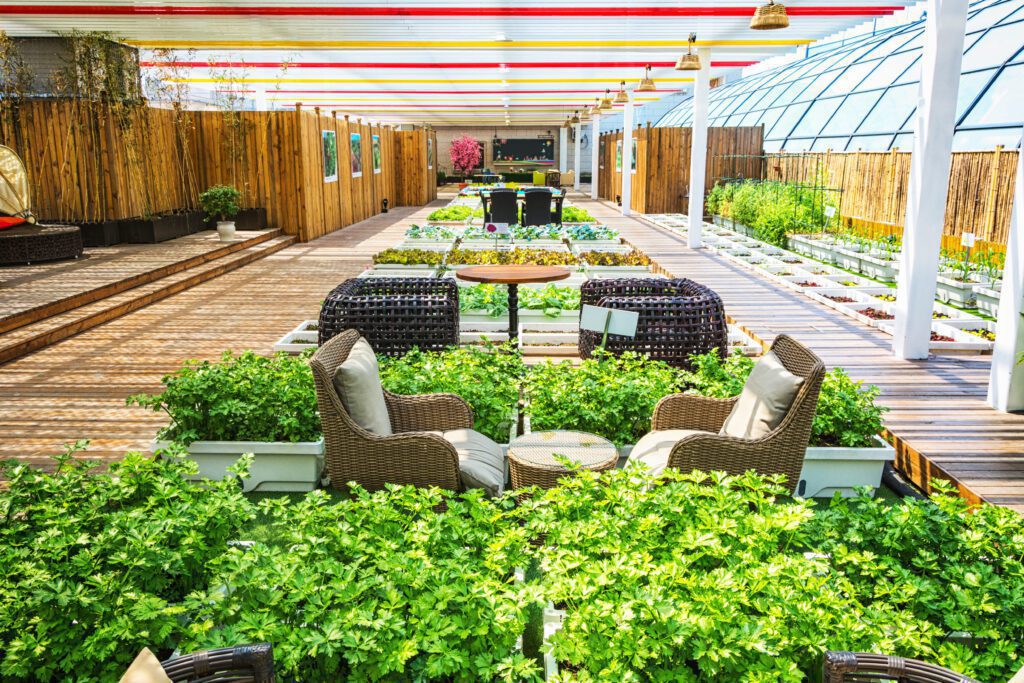
First and foremost, you’ll need to assess the amount of sunlight your chosen location receives. Most vegetables and flowering plants thrive in full sun, which typically means at least six hours of direct sunlight per day. Take note of any areas in your garden that are shaded by trees or buildings and avoid placing your raised bed in these spots, as your plants may struggle to receive sufficient light.
Additionally, it’s essential to evaluate the quality of your soil in the chosen area. Conduct a soil test to determine the pH level and nutrient content. This will help you understand whether any amendments are necessary to create a suitable growing environment for your plants. Analyzing your garden space and selecting the right location sets the foundation for a flourishing raised garden bed, ensuring optimal growing conditions for your beloved plants.
Selecting the Ideal Materials for Your Raised Garden Bed
When selecting the ideal materials for your raised garden bed, it is important to consider several factors that will contribute to the success and longevity of your garden. One key consideration is the type of material you will use for the frame of the bed. There are various options available, including wood, concrete blocks, and metal. Wood is a popular choice, as it is easily accessible, affordable, and provides good insulation for the plants. Cedar and redwood are particularly well-suited for raised garden beds, as they are naturally resistant to rot and insects. However, it is important to ensure that the wood is untreated, as chemicals used to preserve the wood can leach into the soil and harm your plants.
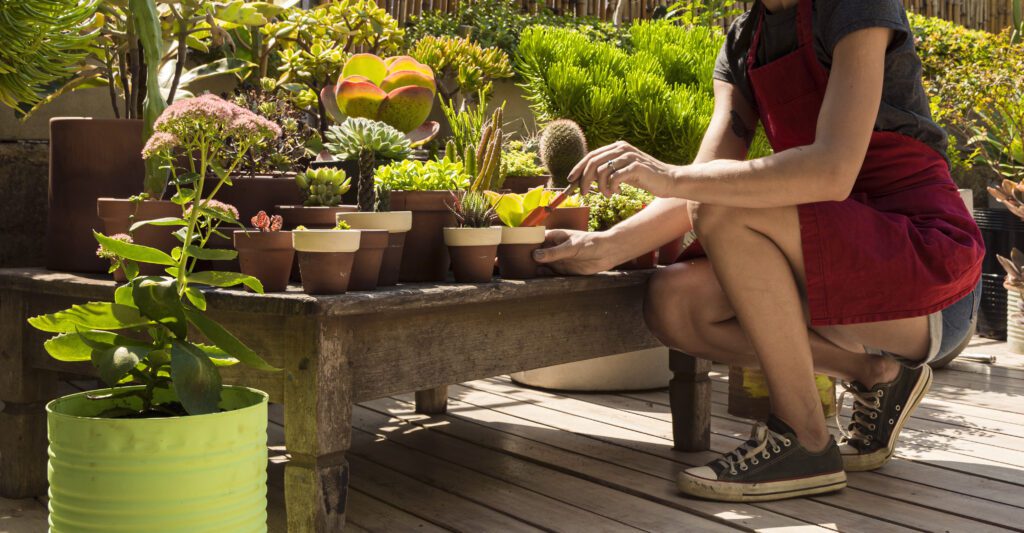
Another aspect to consider is the lining material for the bottom of the bed. This layer helps to prevent weeds from growing up into the bed and allows for proper drainage. Common options include landscape fabric, cardboard, or newspaper. Landscape fabric is a durable and effective choice, as it allows for water drainage while preventing weeds from penetrating the soil. However, it is important to note that the use of plastic or impermeable materials to line the bed should be avoided, as they can hinder water drainage and may cause root rot in the plants. By carefully selecting the materials for your raised garden bed, you can create a conducive environment for healthy plant growth and increase the overall success of your gardening endeavors.
Gathering Free or Low-Cost Supplies for Your Garden Bed
One of the advantages of building a raised garden bed is that you have the opportunity to gather free or low-cost supplies to help construct it. There are various resources available that can provide you with the necessary materials without breaking the bank. One option is to check with your local community or gardening groups, as they often have free or discounted items for gardeners. Additionally, you can explore online classifieds or social media platforms where people often give away or sell unused gardening supplies at a lower cost. By leveraging these resources, you can acquire the materials you need for your raised garden bed while keeping your budget in check.
Another way to obtain free or low-cost supplies for your garden bed is by repurposing items you already have at home or within your community. For example, you can use old wooden pallets, bricks, or cinder blocks to build the frame of your raised bed. Additionally, repurposed containers, such as large pots or buckets, can serve as temporary homes for plants within your raised bed. These alternative options reduce the need for purchasing new materials while still providing a practical and cost-effective solution for your gardening needs. By creatively repurposing items, you not only save money but also contribute to sustainable practices by reducing waste.
Preparing the Ground for Your Raised Garden Bed
Preparing the ground for your raised garden bed is an essential step in ensuring the success of your gardening endeavor. The quality and condition of the soil will greatly impact the growth and health of your plants. Before starting the preparation process, it is crucial to clear the area of any debris, weeds, or grass. This can be done by manually removing them or by using a garden tool such as a rake or shovel.
Preparing the ground for a raised garden bed is crucial for the success of your garden. Here are step-by-step points to guide you through the process:
- Choose a Suitable Location:
- Select a site with good sunlight exposure, preferably 6-8 hours of direct sunlight per day.
- Ensure the area has proper drainage to prevent waterlogging.
- Measure and Mark the Bed Dimensions:
- Determine the size and shape of your raised bed.
- Use stakes and string to mark the outline on the ground.
- Clear the Area:
- Remove any existing vegetation, grass, or weeds from the marked area.
- Use a shovel, rake, or a sod cutter if necessary.
- Level the Ground:
- Ensure the ground is level by using a level tool.
- If needed, add or remove soil to achieve a flat and even surface.
- Weed Control:
- Dig out any persistent weeds or use a weed barrier fabric to prevent weed growth.
- This will help keep the garden bed free of competition and make maintenance easier.
- Add a Weed Barrier (Optional):
- Consider laying a weed barrier fabric at the bottom of the bed to further prevent weed growth.
- Improve Soil Quality:
- Test the soil to determine its composition and nutrient levels.
- Amend the soil with organic matter such as compost or well-rotted manure to improve fertility and structure.
- Create Pathways (Optional):
- If you plan to have paths between multiple raised beds, create defined pathways using materials like gravel, wood chips, or stepping stones.
- Construct the Raised Bed Frame:
- Build or assemble the frame of the raised bed using materials like wood, metal, or composite boards.
- Ensure the bed is level and securely anchored to the ground.
- Fill the Bed with Soil:
- Use a high-quality garden soil mix or a combination of topsoil and compost to fill the raised bed.
- Water the soil as you fill to help settle it.
- Mulch the Surface:
- Apply a layer of organic mulch on the surface to help retain moisture, suppress weeds, and regulate soil temperature.
- Install Irrigation System (Optional):
- Consider installing a drip irrigation system to ensure efficient watering.
- This can be especially beneficial in dry climates or for gardeners with busy schedules.
- Plan Plant Placement:
- Arrange your plants according to their growth habits, considering height, sunlight requirements, and spacing recommendations.
- Fertilize (Optional):
- If your soil test indicates a need for additional nutrients, apply a balanced organic fertilizer according to package instructions.
- Monitor and Maintain:
- Regularly check for pests, diseases, and soil moisture.
- Adjust watering and apply additional amendments as needed throughout the growing season.
Once the area is cleared, it is recommended to test the soil for nutrient levels and pH. This will help you determine if any amendments are needed to optimize the soil for plant growth. Soil testing kits are readily available at garden centers or through professional agricultural agencies. Based on the results, you can add organic matter, such as compost or well-rotted manure, to improve the soil structure and provide essential nutrients. Additionally, if the pH levels are not suitable for your desired plants, you can amend the soil with lime to raise the pH or sulfur to lower it. By preparing the ground thoroughly and addressing any soil deficiencies, you will create a fertile and hospitable environment for your raised garden bed.
Designing the Layout and Dimensions of Your Garden Bed
When it comes to designing the layout and dimensions of your garden bed, there are several factors to consider to ensure optimal plant growth and productivity. Firstly, you’ll want to assess the available space in your garden and choose a suitable location for your raised bed. Consider factors such as sunlight exposure, proximity to a water source, and accessibility for maintenance and harvesting.
Once you have identified the location, it’s time to determine the size and shape of your garden bed. While there is no standard size for raised beds, a width of 3 to 4 feet is generally recommended to allow for easy reach across the bed without stepping on the soil. The length can vary based on your available space and gardening needs. Keep in mind that shorter beds are often more manageable for maintenance, while longer beds can provide greater planting space. Additionally, consider the height of your bed, as higher beds can reduce strain on your back and knees.
With the layout and dimensions finalized, it’s important to prepare the ground beneath the bed properly. Clear any grass or weeds in the area and ensure it is level and free of obstacles. This is also an ideal time to install any border materials, such as timber or stone, to define the edges of your garden bed and provide a neat appearance.
Designing the layout and dimensions of your garden bed is a crucial step in setting the foundation for a successful gardening project. By considering factors such as location, size, and shape, you can create a functional and aesthetically pleasing raised bed that promotes healthy plant growth. In the next section, we will explore the process of building the frame of your raised bed, ensuring durability and stability.
Building the Frame of Your Raised Garden Bed
To build the frame of your raised garden bed, you will need to gather the necessary materials and decide on the size and shape of your bed. The most common materials for building the frame include wood, bricks, or blocks, each with its own advantages and considerations.
If you opt for using wood, it’s important to choose a type that is resistant to rot and decay, such as cedar or redwood. These woods are durable and can withstand the moisture present in a garden environment. To construct the frame, start by measuring and marking the desired dimensions on the ground. Then, cut the lumber to the appropriate lengths and join them using screws or nails. Ensure that the corners are squared and the frame is sturdy before proceeding to the next steps.
Using bricks or blocks provides a more permanent and visually appealing option for your raised garden bed. When choosing bricks, select ones that are appropriate for outdoor use and have the ability to withstand freeze-thaw cycles. Alternatively, concrete blocks offer a sturdy and convenient solution. Lay them out in the desired shape, ensuring they are level and properly aligned. Use construction adhesive or mortar to secure the blocks together, creating a solid foundation for your bed.
By following these steps and carefully selecting the appropriate materials, you can successfully build the frame of your raised garden bed. This foundation will provide the necessary support for your plants and help to define the boundaries of your garden space. Once the frame is complete, you can move on to the next steps of filling the bed with soil and preparing for planting.
Adding the Bottom Layer for Proper Drainage and Weed Prevention
When adding the bottom layer to your raised garden bed, it is crucial to prioritize proper drainage and weed prevention. These two factors play a significant role in the success of your garden bed and the overall health of your plants.
| Step | Action |
|---|---|
| 1 | Clear the area of existing vegetation and debris. |
| 2 | Level the ground using a shovel or rake. |
| 3 | Optional: Install a weed barrier fabric. |
| 4 | Place a layer of coarse gravel or small rocks. |
| 5 | Optional: Add a layer of landscape fabric. |
| 6 | Create a second layer using finer gravel or sand. |
| 7 | Level and compact the bottom layer. |
| 8 | Optional: Install additional drainage pipes. |
| 9 | Add a layer of geotextile fabric (optional). |
| 10 | Construct the raised bed frame on top. |
| 11 | Fill the bed with a suitable soil mix. |
To ensure adequate drainage, it is recommended to use a layer of coarse gravel or small rocks at the bottom of the bed. This layer allows excess water to drain freely, preventing waterlogged soil that can lead to root rot and other moisture-related issues. Additionally, the gravel layer acts as a barrier, preventing soil compaction and allowing the roots to expand and access nutrients more efficiently.
In terms of weed prevention, a layer of landscape fabric or weed barrier cloth can be placed on top of the gravel layer. This fabric helps suppress weed growth by blocking sunlight, preventing weeds from sprouting and competing with your plants for essential nutrients. However, it is important to note that some weeds may still find their way through small gaps or tears in the fabric, so regular inspections and maintenance are necessary to keep your bed weed-free.
Filling the Bed with Nutrient-Rich Soil for Healthy Plant Growth
Filling the bed with nutrient-rich soil is a crucial step in ensuring healthy plant growth in your raised garden bed. The quality of soil used directly impacts the overall productivity and success of your plants. To create the ideal growing environment, it is essential to understand the composition and requirements of nutrient-rich soil.
Nutrient-rich soil typically consists of a well-balanced combination of organic matter, minerals, and microorganisms. Organic matter, such as compost, provides essential nutrients like nitrogen, phosphorus, and potassium, while also improving soil structure and water retention. Minerals like calcium, magnesium, and iron support plant growth and development. Additionally, microorganisms like bacteria and fungi work symbiotically with plants by aiding in nutrient absorption and disease prevention.
When selecting soil for your raised garden bed, it is important to consider factors such as the specific needs of your plants, the pH level of the soil, and its ability to hold moisture. Different plants have varying nutrient requirements, and it is crucial to choose soil that meets these specific needs. Conducting a soil test can help determine the pH level, fertility, and composition of the soil, allowing you to make necessary adjustments to ensure optimal plant growth.
By filling your raised garden bed with nutrient-rich soil, you are providing your plants with a foundation for success. The careful selection and preparation of soil will set the stage for healthy plant growth, robust yields, and a thriving garden.
• Nutrient-rich soil consists of organic matter, minerals, and microorganisms
• Organic matter like compost provides essential nutrients and improves soil structure
• Minerals like calcium, magnesium, and iron support plant growth
• Microorganisms aid in nutrient absorption and disease prevention
• Consider the specific needs of your plants when selecting soil for your raised garden bed
• Conduct a soil test to determine pH level, fertility, and composition of the soil
Incorporating Organic Matter and Compost for Enhanced Soil Quality
Incorporating organic matter and compost into your raised garden bed is essential for enhancing soil quality and promoting healthy plant growth. Organic matter, such as decomposed leaves, grass clippings, or kitchen scraps, provides a wealth of nutrients that nourish your plants. Additionally, compost acts as a natural fertilizer, improving soil structure and moisture retention.
When adding organic matter to your raised garden bed, consider the ratio of green to brown materials. Green materials, like fresh grass clippings or vegetable scraps, are rich in nitrogen, while brown materials, such as dried leaves or straw, provide carbon. A balanced mix of both green and brown materials ensures a nutrient-rich compost that promotes microbial activity and helps break down organic matter. As you layer the compost into your garden bed, be sure to mix it thoroughly with the existing soil to ensure an even distribution of nutrients throughout the bed.
Remember, incorporating organic matter and compost is an ongoing process. As your plants grow and consume nutrients, you’ll need to replenish the organic matter in your garden bed. Regularly adding compost and turning it into the soil throughout the growing season will help maintain the soil’s fertility and provide the necessary nutrients for your plants to thrive. By incorporating organic matter and compost into your raised garden bed, you are setting the stage for a vibrant and flourishing garden.
Installing Drip Irrigation or Watering Systems for Efficient Plant Care
Installing drip irrigation or watering systems in your raised garden bed is a crucial step for efficient plant care. By providing a controlled and consistent water supply directly to the roots, you can ensure optimal hydration and prevent overwatering or underwatering. This not only saves water but also promotes healthier plant growth and minimizes the risk of diseases caused by excessive moisture.
There are various types of irrigation systems you can consider for your raised garden bed. Drip irrigation, for instance, involves placing small tubes or hoses with emitters near each plant, delivering water directly to the root zone. This method not only reduces water waste through evaporation but also prevents moisture-related issues such as fungal diseases. Another option is a soaker hose system, which consists of permeable hoses that release water along their entire length. This allows for slow and even watering, preventing runoff and ensuring thorough hydration for your plants. Other alternatives include micro-sprinklers or misters, which provide a fine spray of water, and automated irrigation systems that can be set on timers for effortless plant care.
Choosing the Perfect Plants for Your Raised Garden Bed
Choosing the perfect plants for your raised garden bed is a crucial step in ensuring a successful and bountiful harvest. When selecting plants, it is important to consider not only your personal preferences but also the specific conditions of your garden bed. Factors such as sunlight exposure, soil type, and climate will play a significant role in determining which plants will thrive in your raised garden bed.
One of the first considerations when choosing plants is the amount of sunlight your garden bed receives. Some plants, like tomatoes and peppers, require full sun, which is typically defined as six to eight hours of direct sunlight per day. On the other hand, leafy greens such as lettuce and spinach can tolerate partial shade, making them suitable choices for areas with limited sunlight. By assessing the sun exposure in your garden bed, you can ensure that you select plants that will receive the optimal amount of light for healthy growth.
Soil type is another critical factor to consider when selecting plants for your raised garden bed. Different plants have specific soil requirements, and understanding these requirements will help you create a suitable environment for your plants. For example, herbs like rosemary and thyme prefer well-drained soil, while root vegetables like carrots and radishes thrive in loose, fertile soil. Additionally, it is essential to assess the pH of your soil, as certain plants prefer acidic soil (such as blueberries) while others thrive in alkaline soil (like lavender). By conducting a soil test and amending your soil accordingly, you can ensure that your chosen plants will receive the necessary nutrients for healthy growth.
Choosing the perfect plants for your raised garden bed involves careful assessment of sunlight exposure, soil type, and other environmental conditions. By considering these factors, you can select plants that will flourish in your specific garden bed, leading to a successful and productive growing season. Stay tuned for our next section, where we’ll explore the maintenance and care required to keep your raised garden bed thriving year after year.
Maintaining and Caring for Your Raised Garden Bed
Proper maintenance and care are crucial for the success of your raised garden bed. By following a few simple practices, you can ensure a healthy and thriving garden that yields bountiful harvests. One important aspect of maintenance is regular watering. Depending on the plants you are growing and the climate you live in, you may need to adjust your watering schedule accordingly. It is generally recommended to water deeply rather than frequently, as this encourages the roots to grow deeper into the soil, promoting stronger and more resilient plants. Consider installing a drip irrigation system or using soaker hoses to provide consistent and efficient watering.
Another key aspect of caring for your raised garden bed is proper weed management. Weeds can quickly compete with your plants for nutrients, sunlight, and water, hampering their growth and productivity. Regularly inspect your garden bed for any sign of weeds and remove them promptly. It is advisable to pull weeds by hand or use a handheld hoe, as using herbicides can negatively impact the health of your plants and the environment. Applying a layer of mulch, such as straw or wood chips, around your plants can also help suppress weed growth by blocking sunlight and preventing weed seeds from germinating.
Troubleshooting Common Issues in Raised Garden Beds
One of the most common issues that gardeners may encounter with raised garden beds is poor drainage. If the bed does not drain properly, excess water can accumulate and cause root rot or other fungal diseases in your plants. To troubleshoot this problem, ensure that your raised garden bed has adequate drainage by adding a layer of coarse gravel or crushed rocks at the bottom before adding soil. This will help to create a space for excess water to drain away from the roots of your plants. Additionally, consider using a well-draining soil mix specifically formulated for raised beds to promote proper water movement.
Another common challenge in raised garden beds is weed infestation. Weeds can compete with your plants for nutrients, water, and sunlight, which can hinder their growth and yield. To tackle this issue, it is important to take preventive measures such as installing a weed barrier before filling the bed with soil. This can be a landscape fabric or a thick layer of newspaper or cardboard that will smother existing weeds and prevent new ones from sprouting. Regularly inspect your raised garden bed for any emerging weeds and promptly remove them by hand or using a garden hoe. Additionally, consider mulching the surface of the soil with organic materials like straw or wood chips to further suppress weed growth. By addressing these common issues, you can ensure the success and productivity of your raised garden bed.
for more details check the vedio given below
How high should a raised garden bed be?
The ideal height for a raised garden bed is typically around 12 to 18 inches. This provides enough depth for plant roots to grow while still being easily accessible for planting, weeding, and harvesting.
Can I use pressure-treated wood for building a raised garden bed?
It is not recommended to use pressure-treated wood for building raised garden beds. The chemicals used in the treatment process can leach into the soil and potentially be absorbed by plants. Opt for untreated, naturally rot-resistant wood such as cedar or redwood instead.
How do I prevent weeds from growing in my raised garden bed?
To prevent weeds, it is essential to add a bottom layer of weed barrier fabric before filling the bed with soil. Additionally, regularly inspecting the bed for any weed growth and promptly removing them by hand can help maintain a weed-free garden.
Do I need to fertilize the soil in my raised garden bed?
Yes, it is recommended to regularly fertilize the soil in your raised garden bed to ensure healthy plant growth. Organic fertilizers or compost can be added to provide essential nutrients for the plants.
Can I use regular garden soil in my raised garden bed?
It is generally not recommended to use regular garden soil in raised garden beds. Instead, use a mixture of topsoil, compost, and other organic matter to create a nutrient-rich and well-draining soil blend.
How often should I water my plants in a raised garden bed?
The watering frequency will vary depending on factors such as plant type, weather conditions, and soil moisture levels. However, as a general guideline, raised garden beds usually require watering every 2-3 days, especially in hot and dry weather.
What should I do if my raised garden bed becomes overcrowded?
If your raised garden bed becomes overcrowded, you may need to thin out some plants to provide sufficient space for healthy growth. Remove any weak or diseased plants and space the remaining ones according to their specific requirements.
How can I protect my raised garden bed from pests?
To protect your raised garden bed from pests, you can install physical barriers such as fences or netting to keep out larger animals. Additionally, using organic pest control methods like companion planting, applying natural repellents, or using row covers can help deter pests.
Should I prune plants in my raised garden bed?
Pruning plants in a raised garden bed can help promote better airflow, reduce disease risk, and improve overall plant health. However, not all plants require pruning, so it is essential to research specific plant varieties and their pruning needs.
Can I use a raised garden bed for growing vegetables?
Yes, raised garden beds are excellent for growing vegetables. They provide better soil drainage, prevent soil compaction, and make it easier to control weeds, pests, and diseases, resulting in healthier vegetable plants.

